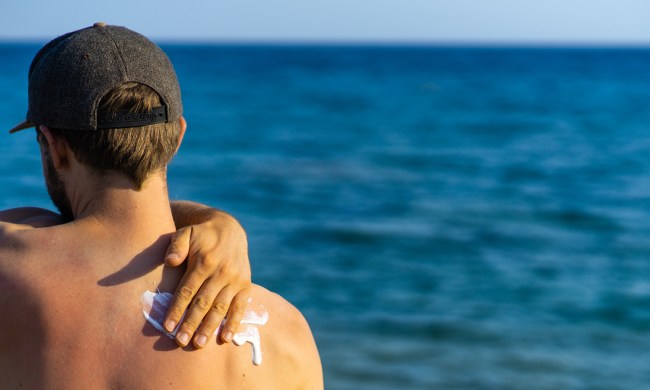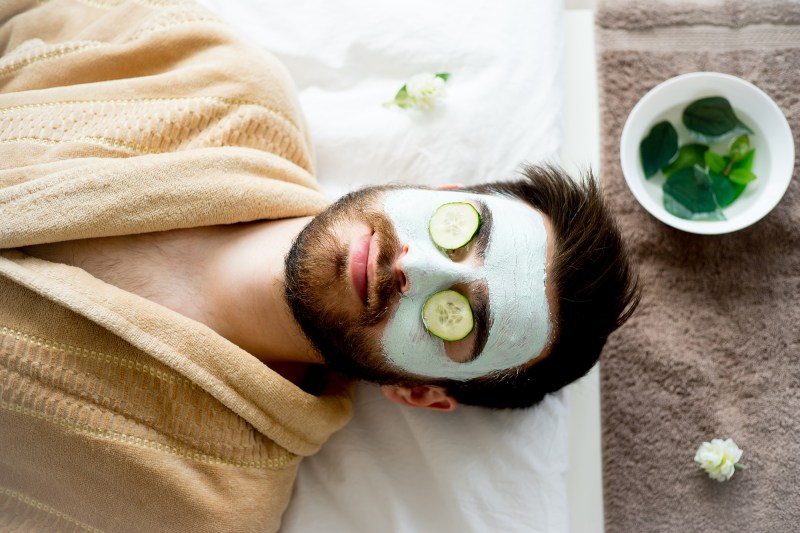
Ever leaf through a women’s magazine and see shots of an otherwise gorgeous model with her hair wrapped in a towel, some creamy goo obscuring her otherwise magnificent features, and cucumbers concealing those $100,000 eyes? Often, the article is about creating skin treatments at home, especially face masks, using everything from avocados to turmeric and vinegar.
Although these straight-from-the-pantry fixes have always been in a woman’s toolbox, they haven’t gotten quite as much attention from men’s sources. What? Like guys don’t have kitchens? (I know I left mine around here somewhere.) In these days of DIY madness, being able to whip up a quick fix for your face can not only make you feel better, but it’s also downright neighborly: That’s one less package that an essential delivery person has to bring from a warehouse to your front door.
We spoke to Timi Racz, the former head of research and development for Formula Botanica — an accredited online school for learning about organic cosmetic science — to get a few pointers and recipes for creating awesome skincare products (like men’s face masks) from stuff that’s probably already in your cupboard.

Look for the best quality, organic ingredients
While raiding your pantry for the canned goods and pasta you’ve been hoarding might work for making dinner, be a little more careful when pulling together the ingredients for skincare. There is a difference between food-grade and cosmetic-grade ingredients. “If you shop for oils in the supermarket, for example, they will come as food-grade quality, which means they are suitable for consumption. One is not necessarily inferior to the other, but the standards and quality may differ,” Racz told The Manual.
If you choose to apply ingredients purchased in the grocery store, Racz recommends buying organic whenever possible. Get carrier oils (unscented or lightly scented oils used to dilute potent essential oils) that are cold-pressed. Avoid anything refined since those are often stripped of their beneficial properties in the refining process.

Men’s skin is just different
Before you go raiding your wife’s, girlfriend’s, or daughter’s bedside reading, keep in mind that men’s skin is different from women’s. Racz shared tests that compared the differences and changes in the skin of men and women as we age.
“Men’s skin is slightly thicker, and starts to lose hydration after the age of 40,” Racz noted. “It was also noted that sebum production (the oil skin produces naturally) is higher in men, which may result in them having oilier skin. Of course, there are many external and internal factors that affect all this, but the research shows that the aging process affects men just as much, if not more than women.”
To counteract aging, sun damage, and all the other damage we do to ourselves, Racz suggests adopting a daily skincare regimen. “Use facial polishes weekly to remove dead skin cells, use hydrating moisturizers daily, and apply sunscreens whenever you are out and about.”
Just like with any cosmetic products — whether store-bought or homemade — consider that you may have a reaction to an ingredient in that product. Always do a patch test: Apply a bit of the product on the inside of your underarm. If you react to it within a few minutes, it’s best to avoid it.
Read on to learn two exfoliating face masks that you can easily make at home.
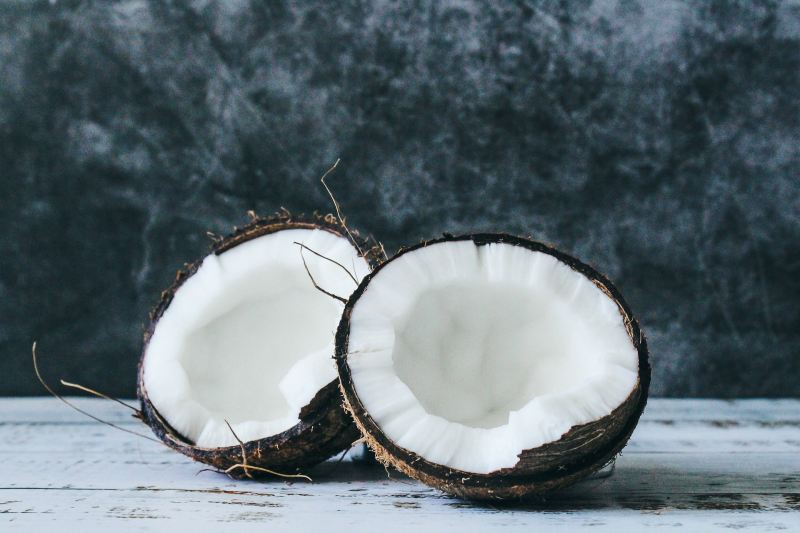
Coconut and walnut facial polish
(By Timi Racz, formerly with Formula Botanica)
Use this blend about twice a week for gentle exfoliation, removing dead skin cells while softening skin. The coconut milk and honey provide superb hydration. You can also add rapadura sugar (unrefined whole cane sugar), or ground poppy seeds to intensify the exfoliation effect. If you’re on a Paleo diet, you probably have several of these ingredients in your kitchen.
Ingredients
- 1 tablespoon coconut flour
- 1 1 tablespoon finely ground walnut (or almond)
- 1 1 tablespoon honey
- 1 teaspoon walnut oil
- Coconut milk
Method
- Mix ingredients with enough coconut milk to create a paste.
- Wash your face with your normal cleanser.
- Use your fingers to gently rub the polish into your forehead, nose, cheeks, and chin, avoiding the area right around the eyes.
- Rinse clean. Always use a fresh mixture and discard the remainder.

Soothing hydrating mask
(By Timi Racz, formerly with Formula Botanica)
This mask incorporates soothing oat flour with rice flour to make the texture creamy. Coconut milk powder is hydrating, and cocoa is an excellent source of polyphenols, a type of antioxidant.
Ingredients
- 2 tablespoons oat flour
- 2 tablespoons rice flour
- 3 tablespoons coconut milk powder
- 1/2 teaspoon raw cocoa powder
Method
- Blend dry ingredients well and store them in an airtight jar.
- Before application, make an infusion using chamomile tea or fresh peppermint leaves.
- Blend 1 tablespoon dry mix in a bowl with the infusion to create a smooth paste.
- Smooth on clean skin, covering the face from forehead to neck, avoiding the eye area.
- Allow to dry for 10 or 15 minutes.
- Rinse with warm water. Remove any remaining mask with a washcloth.
- Always use the liquid mixture fresh, then discard the remainder.
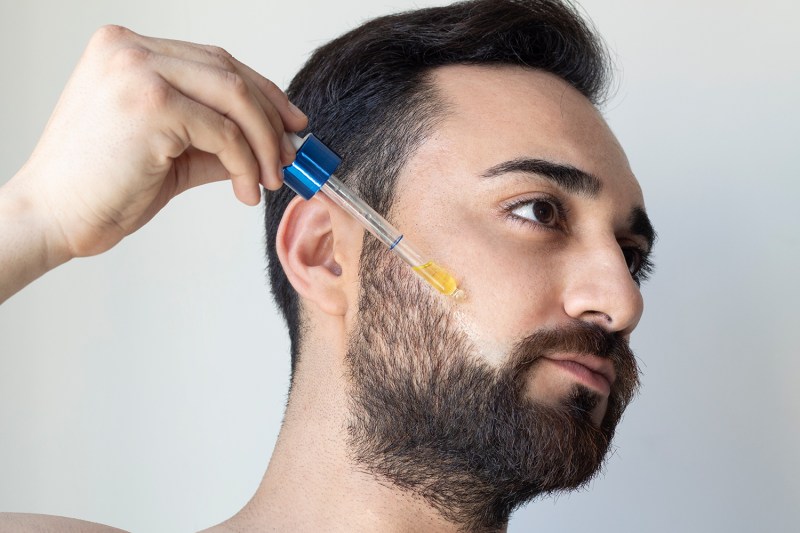
At-home products for shaving
Another way to exfoliate your skin is by shaving. We’ve always recommended using a pre-shave oil to help soften the beard and keep individual hairs upright during your shave. “A good pre-shave also keeps skin lubricated, allowing the blade to glide more easily,” Racz added. “Sesame or jojoba oils work great for this. Just massage into the skin prior to shaving.”
Racz gave us some natural recommendations for post-shave care, as well. Avoid alcohol-based aftershave, which can be drying for your skin. Instead, apply products that are soothing and prevent further irritation. We recommend witch-hazel (Hamamelis Virginiana), which contains tannins, a natural compound with astringent properties that are most effective when mixed with liquids like floral water (think rose water). If that’s not available, just dilute your astringent with water. Aloe vera and chamomile tea are other great calming solutions.
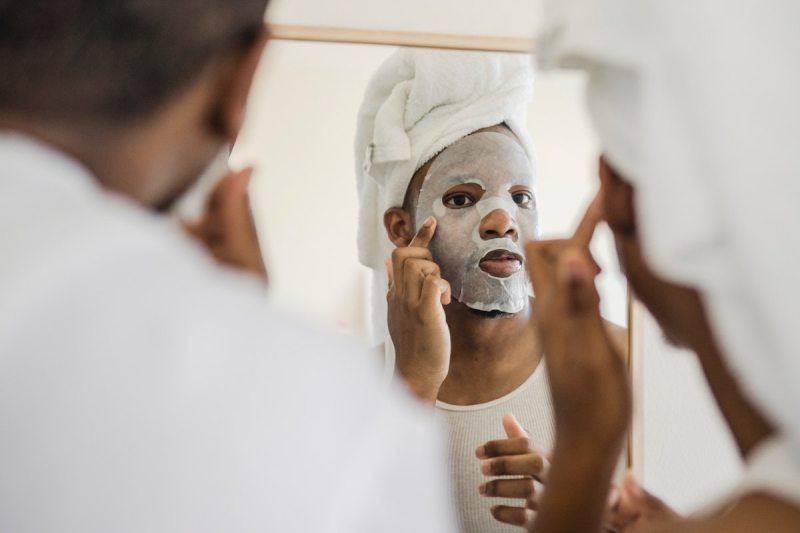
What does exfoliating do to your skin?
Exfoliating is the process of removing dead skin cells from the surface of your skin. It has several potential benefits. When you remove dead skin cells, exfoliation can leave your skin feeling smoother and softer. This is because the built-up layer of dead cells can make your skin feel rough and uneven. Dead skin cells can dull your complexion, so exfoliation can help brighten your skin and give it a more radiant appearance. Dead skin cells can also clog your pores, leading to breakouts. Regular exfoliation can help to keep pores clear and prevent breakouts. When you remove dead skin cells, you allow



